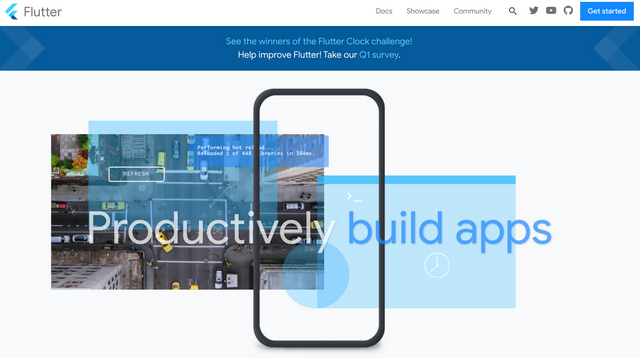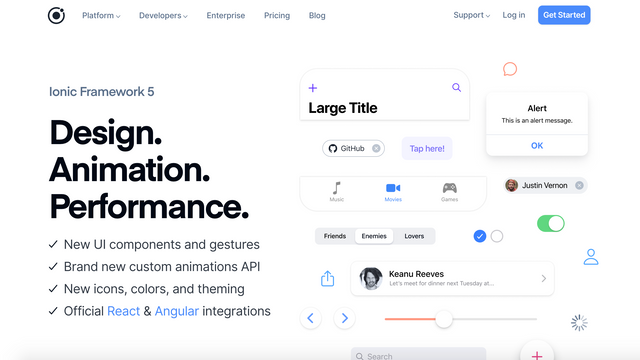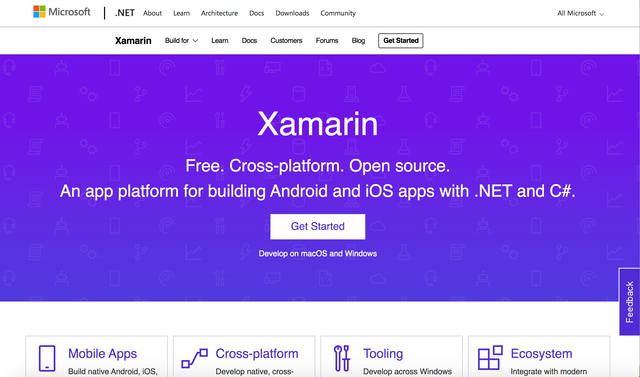
A wide range of options exist for developing mobile applications. You can build your application only with native solutions or use hybrid solutions that combine elements of both native and web applications. This article reviews the differences between native apps and hybrid apps with emphasis on the advantages of hybrid app development.
What Are Hybrid Mobile Apps?
Most mobile apps fall into one of two categories—native or hybrid.
Native apps are built for a particular mobile operating system, either Android, iOS, or Windows. You can only use the operating system’s specific programming language to develop native apps. For example, you can develop Android apps in Java and iOS apps in Swift or Objective-C.
Hybrid apps act and look much like native apps—you can download and install hybrid apps on a user’s device just like a native app. To be considered hybrid, your app needs to use elements of native apps and elements of web apps. The latter adds the value of a website that acts like an app but is not installed on a mobile device. You can access web apps from your desktop browser.
Hybrid apps are deployed in a native container that uses a mobile WebView object. This object uses web technologies like JavaScript, CSS, HTML, and HTML5 to display web content. The WebView object adapts website content to mobile apps. Web content can then be displayed for certain parts of the app upon opening of the app.
Advantages of Hybrid Apps
As in any software development methodology, there is room to debate over pros and cons. This is because different projects come with unique requirements. For example, if you’re developing a heavyweight game app, you might want to go native. If you want lightweight functionality with responsive design, you can go with a native app. The following advantages of hybrid apps are offered as a starting point, to help you out as you assess the needs of your project.
Reduce development time
Hybrid mobile apps are usually easier and faster to develop than native apps. Developers do not need to learn and use native programming languages to develop applications for iOS and Android. They can write JavaScript and HTML to make the application run on all operating systems. As a result, companies can leverage existing web development expertise to lead the mobile market.
Lower costs
A key advantage of hybrid apps is reduced development costs. Developers can target multiple platforms without maintaining large code bases. In fact, hybrid applications use a single code base for several platforms. As a result, development teams can accelerate processes, and reduce time to market. In addition, the app can reach a higher number of users on each platform.
Easy to maintain
Unlike native apps, hybrid apps don’t rely on versioning. The maintenance of hybrid apps is similar to reloading a web page in the browser. However, with native apps development teams need to roll out new versions with each update. Furthermore, users have to update their apps with every new version release.
Offline Access
Mobile apps need a stable Internet connection to operate properly and cannot work offline. This presents a challenge for companies targeting customers from rural areas or places with slow Internet connectivity.
Studies show that 70% of users abandon slow loading apps. The offline accessibility of hybrid apps helps overcome this challenge. End users receive uninterrupted access to the app’s data without losing performance.
Top Hybrid App Frameworks
The list below reviews some of the most used hybrid mobile app frameworks.
Flutter

Flutter is an open-source Software Development Kit (SDK) for mobile developed by Google. Flutter is used to develop UI applications for iOS, Android, Mac, Windows, Linux and the web.
Key features include:
- Fast development: the app reflects code changes directly by using hot reload. Hot reload injects updated source code files into the running Dart Virtual Machine (VM). Flutter automatically rebuilds the widget tree after the VM updates the code. As a result, you can quickly view the effects of changes.
- Expressive UIs: the layered architecture of Flutter provides full customization, and provides control of every pixel on the screen. The powerful compositing capabilities enable animation and overlay of graphics, text, video, and controls without limitation.
- Native performance: Flutter enables embedding of widgets with a natural look regardless of screen size. Widgets provide features like scrolling, navigation, icons, and fonts to provide full native performance on both Android and iOS.
Flutter price: free
Ionic

Ionic Framework is an open source UI toolkit for building mobile and desktop apps using web technologies like CSS, HTML, and JavaScript. Key features include:
- Cross-platform: you can use the same code base to build and deploy apps for iOS, Android, desktop, and the web.
- Design: Ionic offers pre-designed components, interactive paradigms, typography, and an extensible base theme.
- Command Line Interface (CLI): the Ionic CLI provides several helpful commands for developers including server commands, build and debugging tools, and more. You can also use the CLI to perform cloud deployments and builds for Ionic Appflow.
- Framework compatibility: you can use Ionic in most frontend frameworks including React and Vue. Some frameworks may require modifications for full Web Component support.
Ionice price: free
Xamarin

Xamarin extends the .NET developer platform with tools and libraries specifically for building apps for Android, iOS, tvOS, macOS, watchOS, and Windows. Key features include:
- Binding for the underlying SDKs: Xamarin contains bindings for almost all SDKs in both Android and iOS. In addition, these bindings are easy to use and navigate, provide robust compile-time and development checking. This leads to reduced number of runtime errors and higher-quality applications.
- Java, Objective-C, C, and C++: Xamarin provides the power to use a wide array of third party code by directly invoking Java, Objective-C, C, and C++ libraries.
- Robust Base Class Library (BCL)—BCL is a large collection of classes that have comprehensive features like serialization, powerful XML, Database, String, IO, and networking. You can compile existing C# code to allow access to thousands of libraries that add functionality beyond the BCL.
Conclusion
Hybrid application development offers an easier development approach, cost savings, and compatibility across a variety of platforms, unless you are creating a highly performant game or other similar applications. Although hybrid app development requires the use of a UI library to assist in the proper presentation of your user interface, the frameworks mentioned above can help solve this challenge.
https://www.facebook.com/creditcooperativesoftware/
Downvoting a post can decrease pending rewards and make it less visible. Common reasons:
Submit